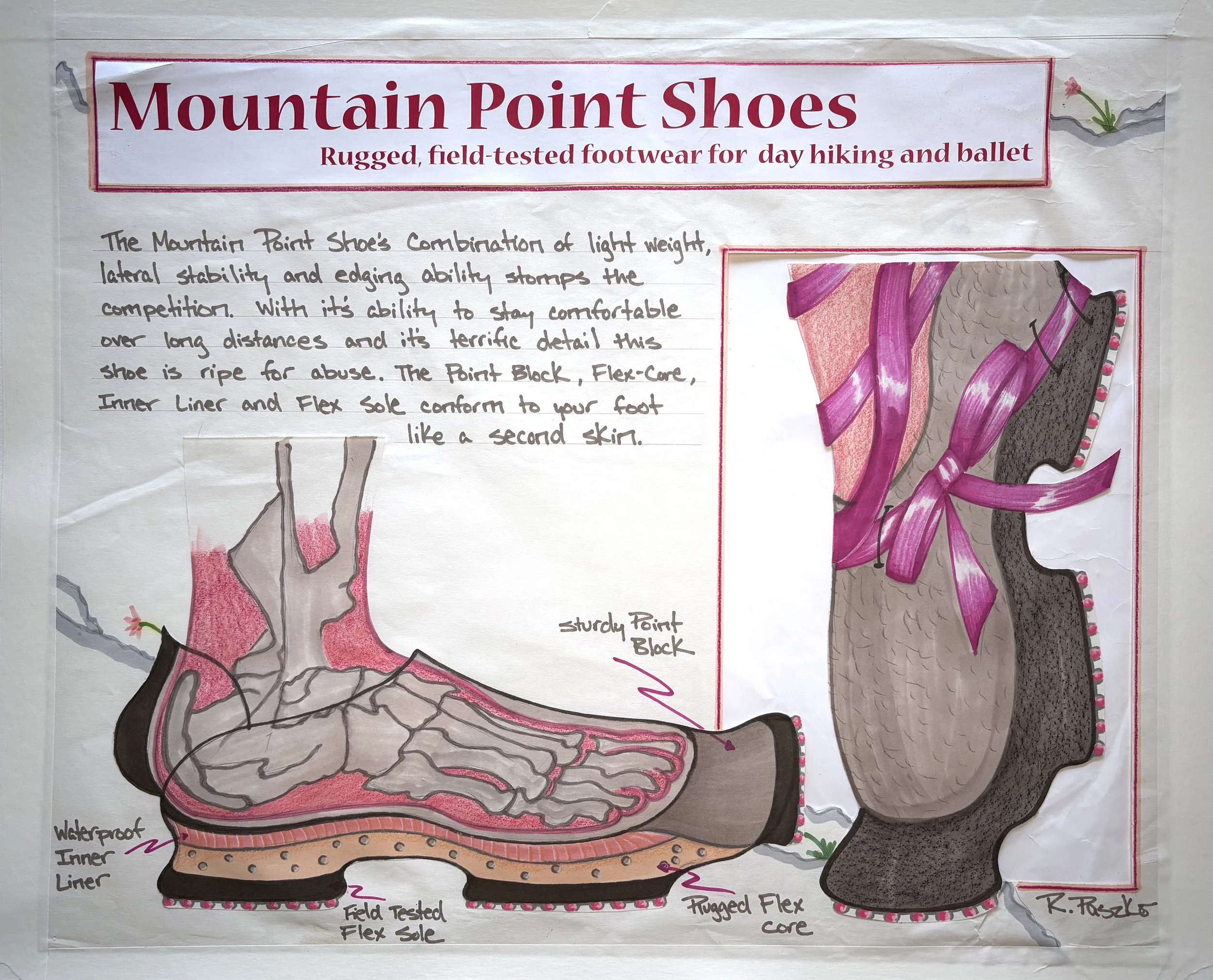From Mountain Pointe Shoes to Nike’s Snoafer
This post was inspired by this morning’s TBOY Podcast episode, “Bezos Da Vinci.” Google’s AI summary was an additional source.
The Rise of Ridiculous Footwear (and Why It Works)
Back in 2004, I pitched a shoe that was never meant to exist.
It was a college assignment where the product itself didn’t have to be real, only the pitch did. And so, I created Mountain Pointe Shoes: rugged, field-tested footwear for day hiking and ballet. Complete with bubble beads for lateral stability, a flex-core sole for scrambling, and satin ribbons for beauty, fit, and to fulfill my love of drawing satin ribbons.
The tagline was an unsubtle description of my target customer mixed with the kind of emotional specificity that good product pitches require, “For anyone who has ever wanted to dance in the mountains.”
I mean who doesn’t fit that description?
The assignment was satire-meets-strategy: how do you sell something absurd so convincingly that people forget how absurd it is? The project wasn’t about prototyping, it was about persuasion.
And now, 20 years later, that spirit has gone mainstream with Nike’s Snoafer.
Nike, facing slipping sales, strategic missteps, and competition from all sides, is betting its turnaround on one very silly shoe: the Air Max Phenomena. It’s half loafer, half sneaker, and all spectacle, a mashup of workplace refinement and gym-class comfort.
What started as a parody pitch in my sketchbook now lives in Nike’s product line.
And to be honest, I love it.
Not because the Snoafer is a good shoe (the jury’s still out), but because it signals something important from a company with everything to lose: a willingness to be weird again.
Nike got stale. They pulled out of Foot Locker. They stopped designing for athletes and started designing for margins. And as their innovation stalled, their customers walked over to competitors. The company that once shaped culture started was reduced to trailing as far behind as the kid picked last for the kickball team.
But the Snoafer is a risk. A weird, buzzy, meme-able, pitch-first product, one that didn’t even exist a year ago and started selling for $500 on resale platforms before the June 27th launch.
It may look like a joke. But it’s actually a comeback strategy.
In a noisy world, design doesn’t just need function, it needs a story.
The Air Max Phenomena is as much an ad campaign as it is a shoe. And I mean that as a compliment. Great pitches have always led great design. That was true when I was illustrating cutaway foot skeletons in marker back in design school. And it’s true now, when brands are trying to cut through AI-generated sameness and attention fatigue.
And for those of us who’ve been doing this for two decades — from sketching Mountain Pointe Shoes to pitching digital transformations in multimillion-dollar boardrooms — it’s a reminder that ridiculous ideas often age into brilliance.
Or, at the very least, resale gold.


